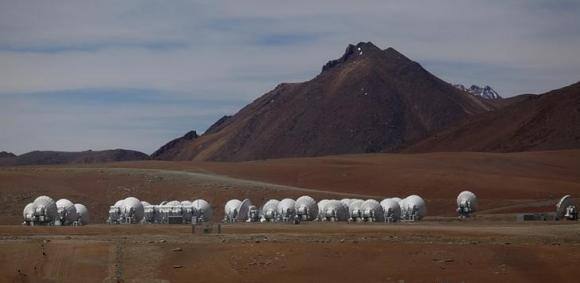
SANTIAGO (Reuters) - Some of the most detailed images ever taken of new planets being born around a star were published on Thursday, which astronomers said could transform theories about planet formation.
High in the Chilean desert, the Atacama Large Millimeter/submillmeter Array, or ALMA, observed the planet-forming disc around the young HL Tauri star, producing the sharpest pictures ever made at submillimeter wavelengths.
The pictures show clear concentric rings in the dust left over from the formation of the star, the gaps indicating that planets are already forming, sweeping a path through the material.
HL Tauri, about 450 light-years away, is around one million years old, a baby by astronomical standards. At that age, current theories suggest there should be very little in the way of planet formation around the star, ALMA Deputy Director Stuartt Corder told Reuters.
“But what we find is in this very young phase, we see all these gaps in the ring, in the disc, and these gaps are cleared by large planetary cores,” he said.
“So even at this young age, ALMA has discovered that already large planetary cores are forming, so the process of planet formation has to occur much faster and much earlier than we had ever expected.”
Stars are formed in nurseries of dust and gas clouds, collapsing under the effect of gravity until they eventually ignite. The remains of the gas and dust that surround the star clump over time into planets, comets and asteroids.
Impact Shorts
More ShortsThe discovery is ALMA’s first observation in a new and more powerful mode that is its near-final configuration. In June, its final antenna was put in place.
The telescope is situated in the remote Atacama desert in northern Chile, where dryness and altitude produce some of the best conditions possible on Earth for observing the night sky.
ALMA’s operations are led by the European Southern Observatory, the U.S. National Radio Astronomy Observatory and the National Astronomical Observatory of Japan.
(Reporting by Rosalba O’Brien and Jorge Vega; Editing by Dan Grebler)
This story has not been edited by Firstpost staff and is generated by auto-feed.
)